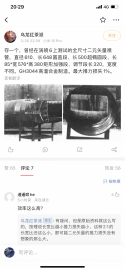This paper takes a certain type of carrier-based aircraft as an example, using the nonlinear motion model of equations (1) to (4), the departure speed from carrier is 52m/s, the angle of attack is 0°, and the engine thrust is 8.7 ×10^4 N, the initial roll angle and sideslip angle of the aircraft are mainly affected by the motion of the carrier deck, and the model of the deck motion is given by equations (5) and (6). The aircraft is fixed on the deck of the aircraft carrier before leaving the ship, so it can be considered that the roll angle of the carrier-based aircraft when it leaves the ship is equal to the roll angle of the aircraft carrier, the yaw angle is equal to the course yaw angle of the aircraft carrier, and the sideslip angle depends on the aircraft carrier's roll angle. The angle between the direction of travel and the direction of the sea breeze. In order to reduce the interference of the lateral wind, the forward direction of the aircraft carrier is usually adjusted so that the angle of the deck wind is not greater than 30°. Select the initial phases of two typical aircraft carrier deck motions, obtain the initial angle and angular velocity when the aircraft leaves the ship through calculation (see Table 2), and set a state without initial deviation for comparison...



